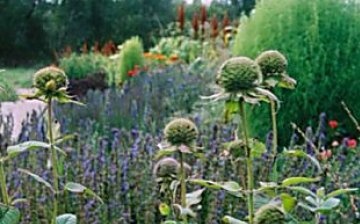Rhizome plant monarda lemon
This plant is named after the Spanish botanist and physician Nicholas Monardes, who described various useful plants in America. In his books, such as "The Medical History of Western India", "Good News from the New World", which were published 200 years before the work of Linnaeus in the classical direction, Monardes himself called a similar plant a virgin soul or a Canadian Origan. Among the people, lemon monard has several names:
- lemon mint;
- American lemon balm;
- bergamot.
It is known that in the old days, the indigenous inhabitants of North America brewed the red flowers of monarda double wild in the form of tea, the taste of the latter was very reminiscent of a mint aroma. This tea, called "Osewego", was used by white settlers as an antipyretic and for stomach pains.
Perennial and annual rhizome plant - lemon monarda - has branched and straight stems up to 150 cm high, with oblong-lanceolate, serrated or simple leaves. The flowers are fragrant, white, red, small, speckled or yellowish, purple, two-lipped, collected in racemose dense or capitate inflorescences with a diameter of 6 to 7 cm, often located one above the other on the stem. The fruit is a nut. Inflorescences, stems and leaves have a bouquet of aromas with a wide range (lemon, mint, etc.).
At the moment, the lemon monard is known to many: some admire the various colors and aromas of flowers, others use it as a spice in cooking, others use it to treat colds, etc.
In Russia, the following types have become widespread:
- lemon monard (M. citriodora);
- double (M. didyma);
- fistula (M.fistulosa);
- medium (M. media);
- soft (M. mollis), etc.



